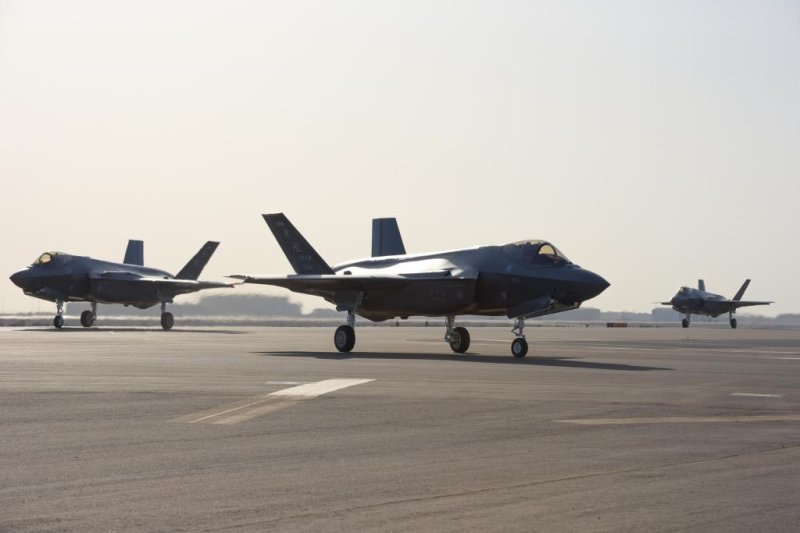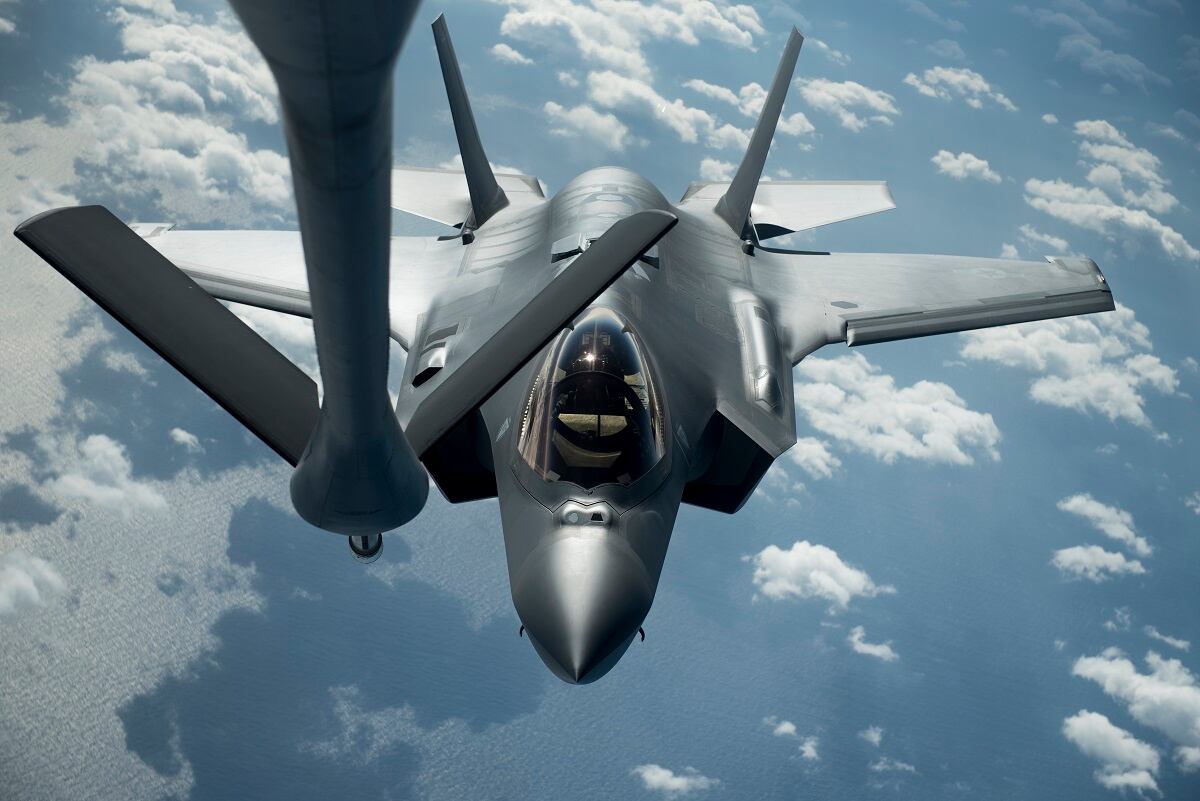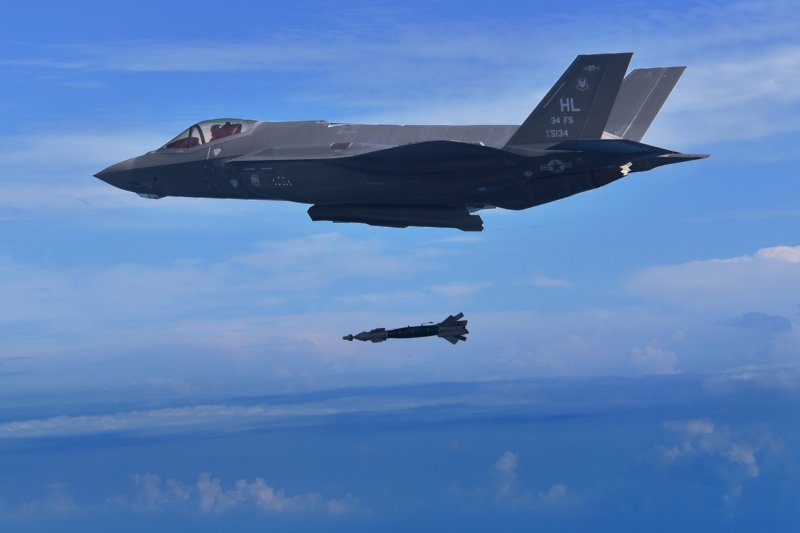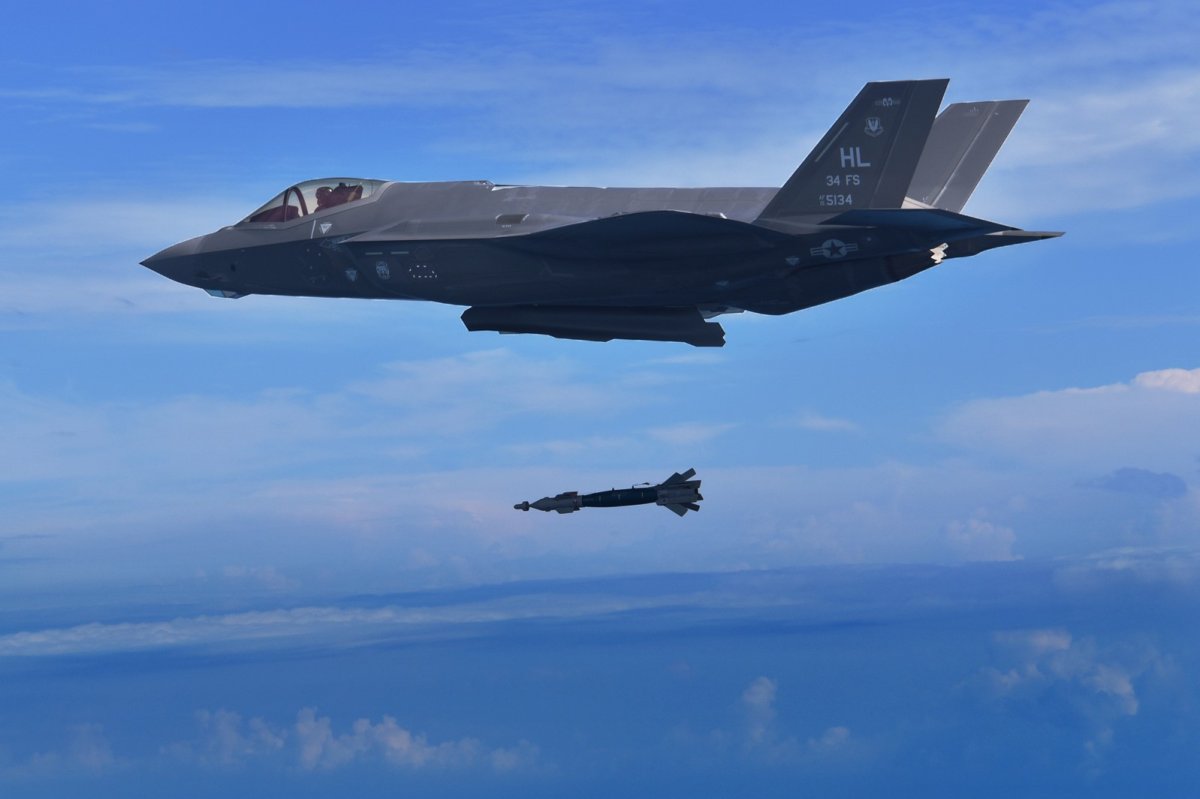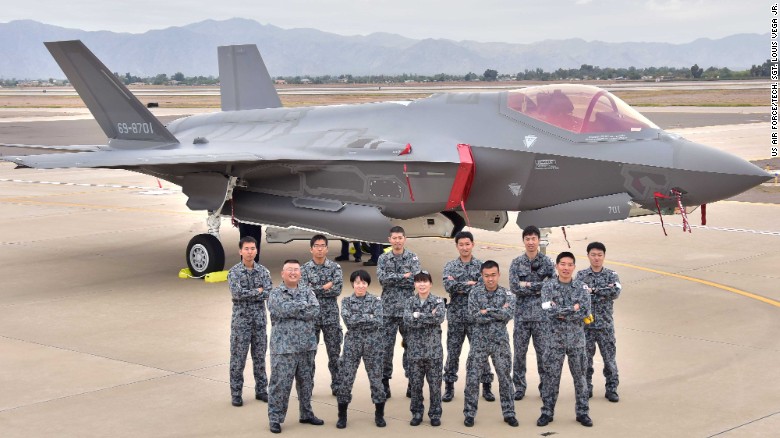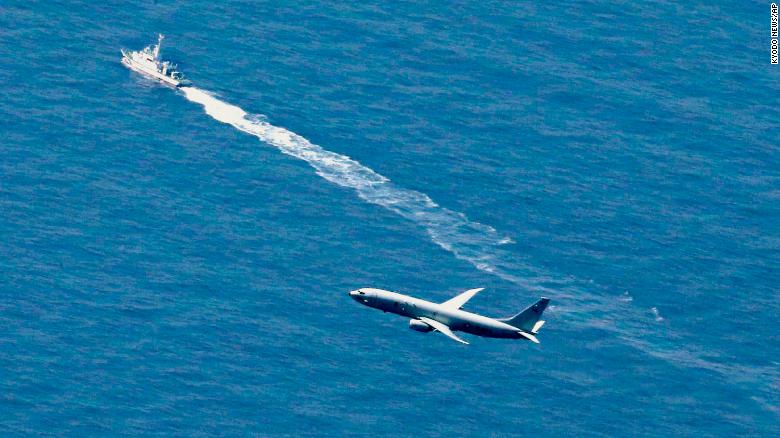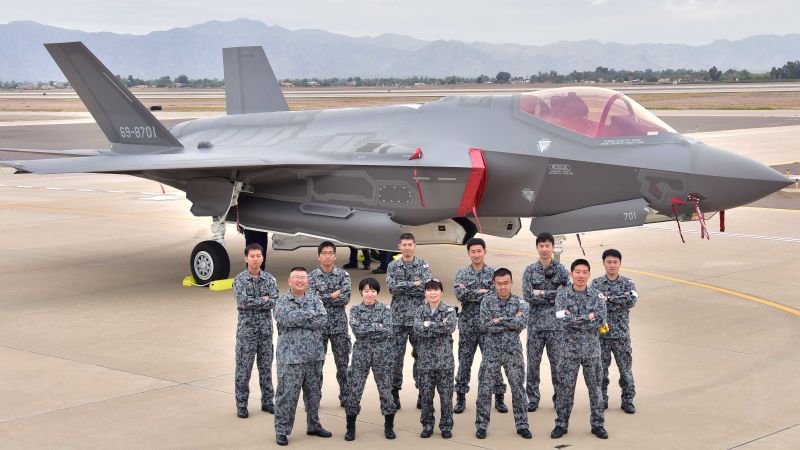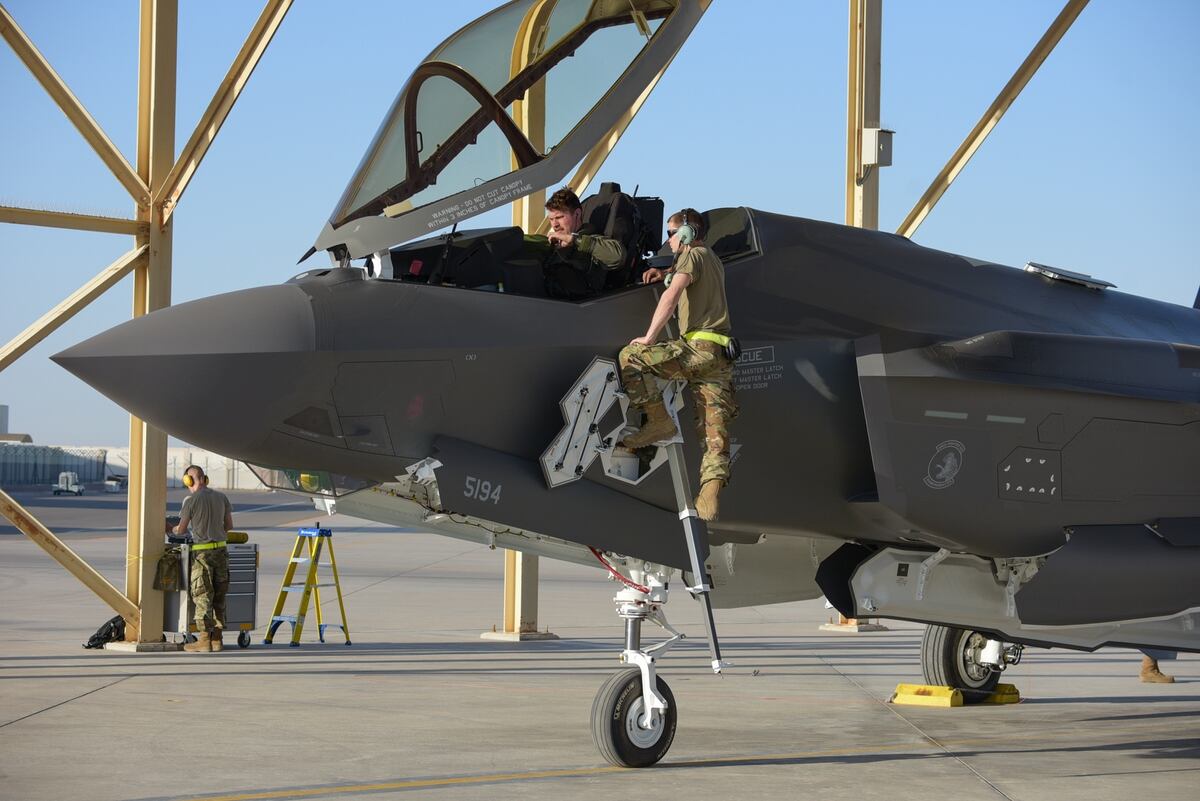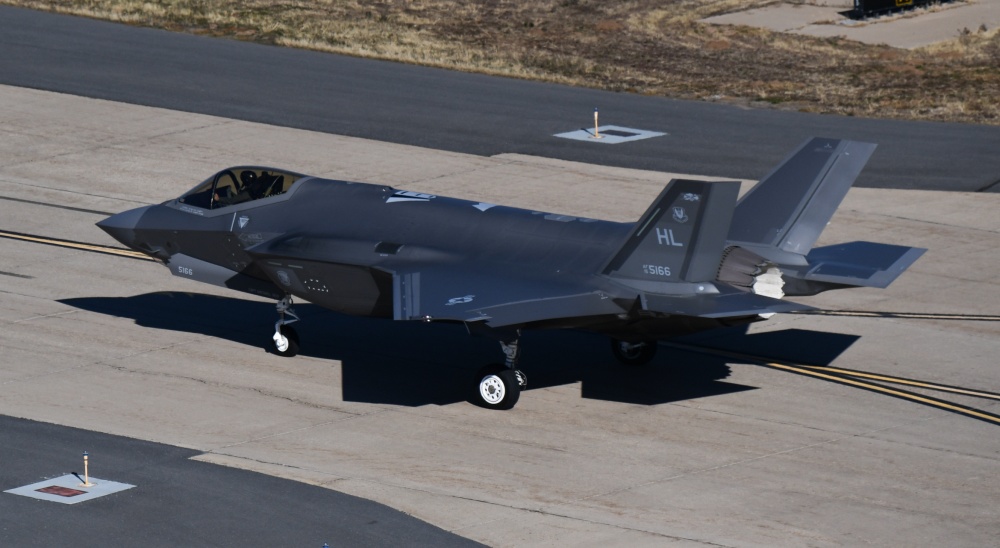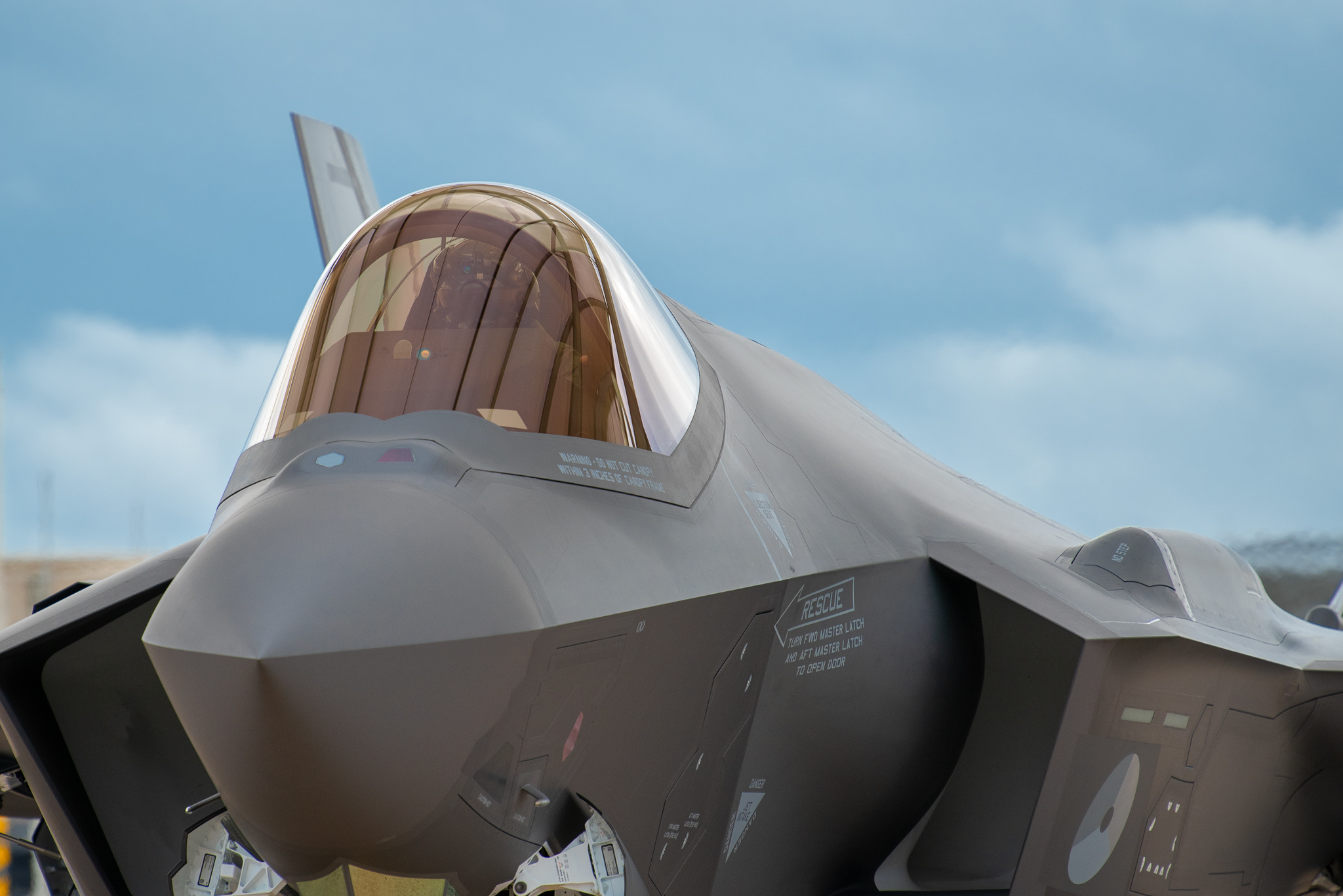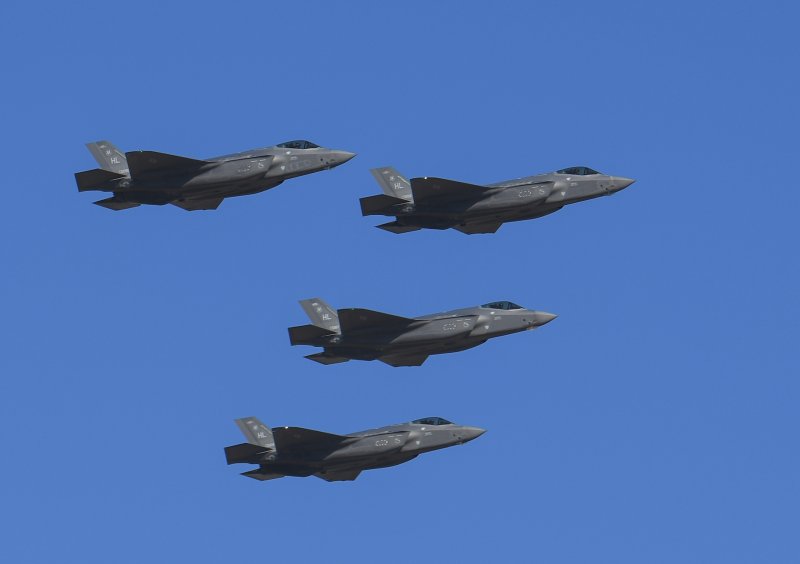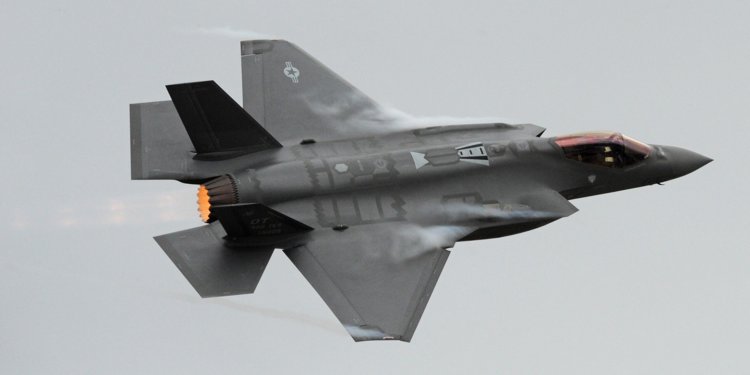Lockheed signs long-term contracts with F-35 suppliers
By
Allen Cone
(0)
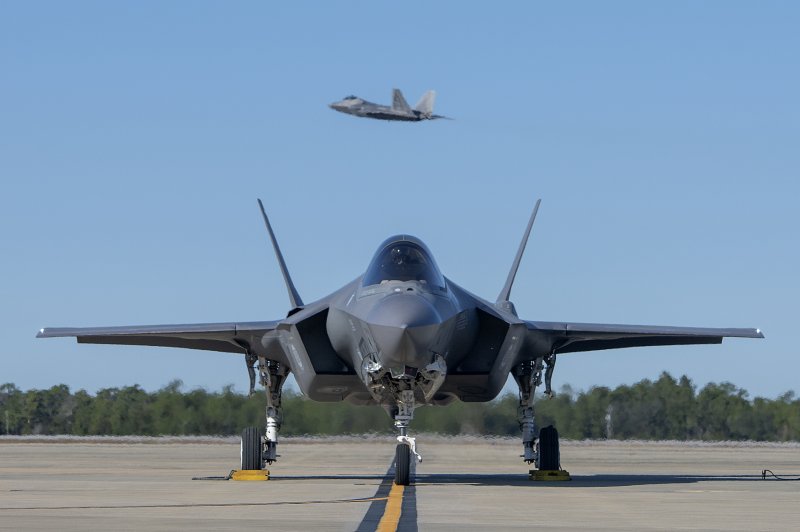
An F-35A Lightning II awaits permission to taxi as an F-22 Raptor takes off on December 4, 2018, at Eglin Air Force Base, Fla. Photo by Staff Sgt. Peter Thompson/U.S. Air Force
April 19 (UPI) -- Lockheed Martin has negotiated new long-term logistics and repair contracts with F-35 Lightning II suppliers with lower costs and better availability.
Lockheed has moved sub-contractors into performance-based logistics contracts or master repair agreements to improve capacity, reduce costs and enhance supply availability, the company announced this week.
"As the F-35 fleet expands, we are partnering with our customers and taking aggressive actions to enhance F-35 readiness and reduce sustainment costs," Greg Ulmer, Lockheed Martin vice president and general manager of the F-35 program, said in a news release Wednesday. "The F-35 global supply chain is a key enabler to success, and we're restructuring and streamlining several contracts with key industry partners to provide the long-term stability that will allow them to make investments, improve efficiencies and optimize their performance."
The performance-based logistics contracts are with BAE Systems, Northrop Grumman and Collins Elbit Vision Systems. The master repair agreements cover contracts with 12 separate suppliers, including Honeywell, GE and Eaton.
A 2017 PBL contract awarded to BAE Systems for the Electronic Warfare subsystem is already delivering a 25 percent improvement in the system's availability throughout global operations, Lockheed said.
Since 2015, Lockheed Martin said it has reduced its portion of operating costs per aircraft by 15 percent and the touch labor on its production line by about 75 percent.
The Joint Program Office has been working with Lockheed Martin and engine‐maker Pratt & Whitney to reduce the cost of the F‐35A to $80 million by 2020 for U.S. Air Force and international partners.
Mat Winter, the head of the program, told Inside Defense earlier this month the unit costs could be as low at $75 million in Lot 14.
"We'd like to be in the $75 [million] to $77 million range for Lot 14," Winter said. "I would say in the high 70s is achievable for Lot 14."
The average F-35 unit cost in fiscal year 2019 for the Defense Department was $108.78 million
The F-35B short take-off/vertical landing variant is used by the U.S. Marine Corps and some foreign military partners at a cost $115.5 million, USNI News reported. The F-35C carrier launched and arrested landing variant primarily used by the U.S. Navy cost $107.7 million each.
Joint foreign partners are Australia, Britain, Canada, Denmark, Italy, the Netherlands, Norway and Turkey.
The Joint Program Office is also working with Lockheed and Pratt to find production‐line efficiencies and reduce the time it takes to build the airframe and engine. Winter said he wants more automation on both companies' production lines as "the amount of automation that is not present is staggering."
"They need to truly invest in their people and their capital ... to increase the production flow and rate," Winter said. "The faster you go, the less it cots. The faster you go, the less time you have to make mistakes."
Lockheed expects to increase production by 40 percent in 2019 with the delivery of 131 aircraft.
About 20 percent of the 386 F-35 fighters have been delivered to international partners and customers through this month. The Marines received the first fighter jet in 2015, the Air Force in 2016 and the Navy this February.
The U.S. military will eventually receive 2,456 F-35s -- 1,763 for the Air Force, 420 for the Marine Corps and 273 for the Navy, according to the Congressional Research Service.
The Pentagon's budget request for fiscal year 2020 allocates $11.2 billion for the F-35 Joint Strike Fighter program, $1.51 billion less than in fiscal year 2018 and $368.3 million less than in fiscal year 2019. The number of F-35s the Pentagon plans to order in fiscal year 2020 will drop by 15 aircraft to 78.
The transition to the F-35 "will result in a smaller total force over time and operational and overall cost efficiencies," according to a Joint Program Office report. It will replace the A-10 and F-16 for the U.S. Air Force, the F/A-18 for the U.S. Navy, the F/A-18 and AV-8B Harrier for the U.S. Marine Corps.
Lockheed signs long-term contracts with F-35 suppliers
By
Allen Cone
(0)

An F-35A Lightning II awaits permission to taxi as an F-22 Raptor takes off on December 4, 2018, at Eglin Air Force Base, Fla. Photo by Staff Sgt. Peter Thompson/U.S. Air Force
April 19 (UPI) -- Lockheed Martin has negotiated new long-term logistics and repair contracts with F-35 Lightning II suppliers with lower costs and better availability.
Lockheed has moved sub-contractors into performance-based logistics contracts or master repair agreements to improve capacity, reduce costs and enhance supply availability, the company announced this week.
"As the F-35 fleet expands, we are partnering with our customers and taking aggressive actions to enhance F-35 readiness and reduce sustainment costs," Greg Ulmer, Lockheed Martin vice president and general manager of the F-35 program, said in a news release Wednesday. "The F-35 global supply chain is a key enabler to success, and we're restructuring and streamlining several contracts with key industry partners to provide the long-term stability that will allow them to make investments, improve efficiencies and optimize their performance."
The performance-based logistics contracts are with BAE Systems, Northrop Grumman and Collins Elbit Vision Systems. The master repair agreements cover contracts with 12 separate suppliers, including Honeywell, GE and Eaton.
A 2017 PBL contract awarded to BAE Systems for the Electronic Warfare subsystem is already delivering a 25 percent improvement in the system's availability throughout global operations, Lockheed said.
Since 2015, Lockheed Martin said it has reduced its portion of operating costs per aircraft by 15 percent and the touch labor on its production line by about 75 percent.
The Joint Program Office has been working with Lockheed Martin and engine‐maker Pratt & Whitney to reduce the cost of the F‐35A to $80 million by 2020 for U.S. Air Force and international partners.
Mat Winter, the head of the program, told Inside Defense earlier this month the unit costs could be as low at $75 million in Lot 14.
"We'd like to be in the $75 [million] to $77 million range for Lot 14," Winter said. "I would say in the high 70s is achievable for Lot 14."
The average F-35 unit cost in fiscal year 2019 for the Defense Department was $108.78 million
The F-35B short take-off/vertical landing variant is used by the U.S. Marine Corps and some foreign military partners at a cost $115.5 million, USNI News reported. The F-35C carrier launched and arrested landing variant primarily used by the U.S. Navy cost $107.7 million each.
Joint foreign partners are Australia, Britain, Canada, Denmark, Italy, the Netherlands, Norway and Turkey.
The Joint Program Office is also working with Lockheed and Pratt to find production‐line efficiencies and reduce the time it takes to build the airframe and engine. Winter said he wants more automation on both companies' production lines as "the amount of automation that is not present is staggering."
"They need to truly invest in their people and their capital ... to increase the production flow and rate," Winter said. "The faster you go, the less it cots. The faster you go, the less time you have to make mistakes."
Lockheed expects to increase production by 40 percent in 2019 with the delivery of 131 aircraft.
About 20 percent of the 386 F-35 fighters have been delivered to international partners and customers through this month. The Marines received the first fighter jet in 2015, the Air Force in 2016 and the Navy this February.
The U.S. military will eventually receive 2,456 F-35s -- 1,763 for the Air Force, 420 for the Marine Corps and 273 for the Navy, according to the Congressional Research Service.
The Pentagon's budget request for fiscal year 2020 allocates $11.2 billion for the F-35 Joint Strike Fighter program, $1.51 billion less than in fiscal year 2018 and $368.3 million less than in fiscal year 2019. The number of F-35s the Pentagon plans to order in fiscal year 2020 will drop by 15 aircraft to 78.
The transition to the F-35 "will result in a smaller total force over time and operational and overall cost efficiencies," according to a Joint Program Office report. It will replace the A-10 and F-16 for the U.S. Air Force, the F/A-18 for the U.S. Navy, the F/A-18 and AV-8B Harrier for the U.S. Marine Corps.
Lockheed signs long-term contracts with F-35 suppliers

